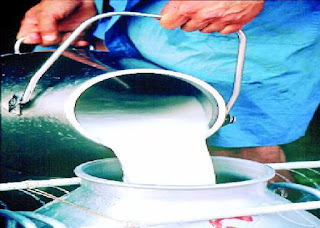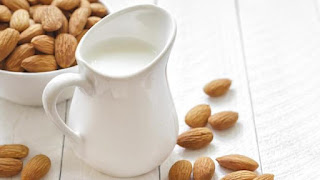What happens in China, one of the world’s largest importers of dairy products and the globe’s second largest economy, has a major impact on both international and U.S. dairy markets. Yet while economic growth has been slowing in China, a rebound in the country’s skim milk powder imports could be in the making, following a year when imports plunged.
In mid-January, the International Monetary Fund (IMF) cut its global growth forecast for the third time in less than a year as new figures out of China showed the country’s 2015 gross domestic product (GDP) grew at 6.9 percent, the country’s slowest growth in 25 years.
Due primarily to the slowdown in China, IMF now expects the world economy to grow at 3.4 percent in 2016 and 3.6 percent in 2017. IMF lowered its forecast for both years by 0.2 percentage points from its October estimates. IMF left its previous GDP growth forecasts for China at 6.3 percent and 6 percent for 2016 and 2017, respectively.
Despite the economic slowdown, China’s imports of skim milk powder (SMP) were up in December and have fared better than its imports of whole milk powder (WMP), according to Mary Ledman, dairy economist with the Daily Dairy Report and president of Keough Ledman Associates Inc., Libertyville, Ill.
In December 2015, China imported nearly 14,800 metric tons, or 34.2 million pounds, of SMP, a 5 percent increase compared to December 2014, according to data to Global Trade Atlas data. For all of 2015, though, China’s SMP imports of 200,267 metric tons (441.5 million pounds) were 20.8 percent below 2014.
“New Zealand commanded 55 percent of China’s skim milk powder market last year, while the European Union captured 22 percent market share, and the United States had an 11-percent share,” says Ledman. China’s SMP imports, however, account for less than 40 percent of the country’s total dried milk imports, she adds. Whole milk powder (WMP) accounts for the rest, and China’s year-over-year imports of WMP plunged even further than SMP imports.
“To say China’s whole milk powder market is dominated by New Zealand is an understatement,” notes Ledman. “In 2015, New Zealand accounted for 97 percent of all of China’s whole milk powder imports, while Australia and the European Union each captured less than 2 percent.”
Oceania’s dominance in whole milk powder, however, provided little solace to the region. Last year, China imported 342,646 metric tons, or 755 million pounds, of whole milk powder, which is about half of the volume it imported in 2014 and the lowest annual volume of WMP imports since 2011, notes Ledman.
Along with New Zealand, China is one of the world’s two largest producers of WMP, producing 1.4 million metric tons a year.
“The dramatic reduction in China’s 2015 whole milk powder imports reflects a recovery in the country’s domestic supply and lower demand, triggered in part by record-high prices in late 2014 and early 2015,” says Ledman. “China’s lower 2015 combined milk powder imports translate into nearly 7 billion pounds of milk-equivalent. In other words, the decline in milk powder exports to China resulted in 7 billion pounds of milk either having to find a different market or a different product class.”
Resource: http://www.agweb.com/article/skim-milk-powder-imports-to-china-pick-up-naa-fran-howard/
In mid-January, the International Monetary Fund (IMF) cut its global growth forecast for the third time in less than a year as new figures out of China showed the country’s 2015 gross domestic product (GDP) grew at 6.9 percent, the country’s slowest growth in 25 years.
Due primarily to the slowdown in China, IMF now expects the world economy to grow at 3.4 percent in 2016 and 3.6 percent in 2017. IMF lowered its forecast for both years by 0.2 percentage points from its October estimates. IMF left its previous GDP growth forecasts for China at 6.3 percent and 6 percent for 2016 and 2017, respectively.
Despite the economic slowdown, China’s imports of skim milk powder (SMP) were up in December and have fared better than its imports of whole milk powder (WMP), according to Mary Ledman, dairy economist with the Daily Dairy Report and president of Keough Ledman Associates Inc., Libertyville, Ill.
In December 2015, China imported nearly 14,800 metric tons, or 34.2 million pounds, of SMP, a 5 percent increase compared to December 2014, according to data to Global Trade Atlas data. For all of 2015, though, China’s SMP imports of 200,267 metric tons (441.5 million pounds) were 20.8 percent below 2014.
“New Zealand commanded 55 percent of China’s skim milk powder market last year, while the European Union captured 22 percent market share, and the United States had an 11-percent share,” says Ledman. China’s SMP imports, however, account for less than 40 percent of the country’s total dried milk imports, she adds. Whole milk powder (WMP) accounts for the rest, and China’s year-over-year imports of WMP plunged even further than SMP imports.
“To say China’s whole milk powder market is dominated by New Zealand is an understatement,” notes Ledman. “In 2015, New Zealand accounted for 97 percent of all of China’s whole milk powder imports, while Australia and the European Union each captured less than 2 percent.”
Oceania’s dominance in whole milk powder, however, provided little solace to the region. Last year, China imported 342,646 metric tons, or 755 million pounds, of whole milk powder, which is about half of the volume it imported in 2014 and the lowest annual volume of WMP imports since 2011, notes Ledman.
Along with New Zealand, China is one of the world’s two largest producers of WMP, producing 1.4 million metric tons a year.
“The dramatic reduction in China’s 2015 whole milk powder imports reflects a recovery in the country’s domestic supply and lower demand, triggered in part by record-high prices in late 2014 and early 2015,” says Ledman. “China’s lower 2015 combined milk powder imports translate into nearly 7 billion pounds of milk-equivalent. In other words, the decline in milk powder exports to China resulted in 7 billion pounds of milk either having to find a different market or a different product class.”
Resource: http://www.agweb.com/article/skim-milk-powder-imports-to-china-pick-up-naa-fran-howard/






















